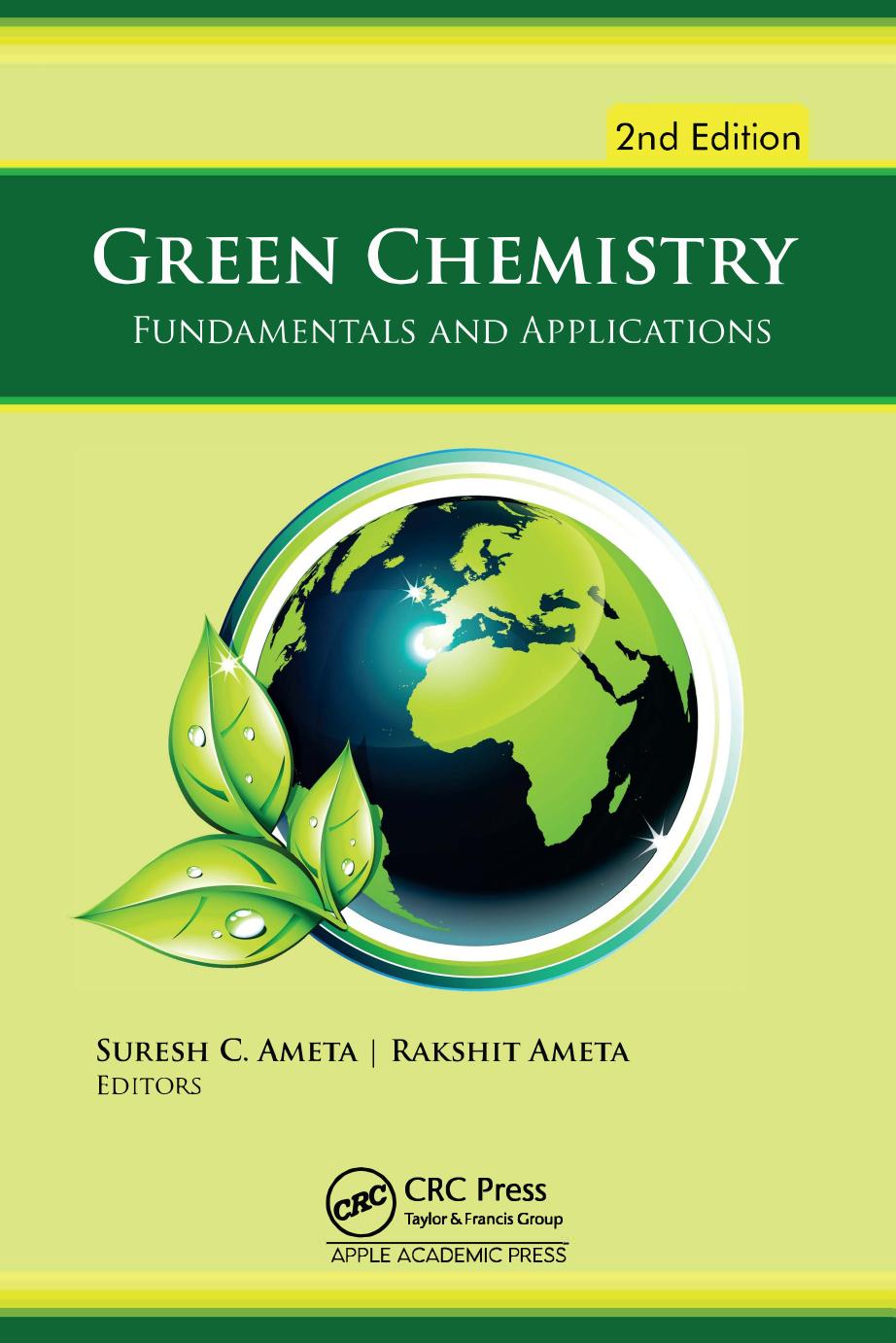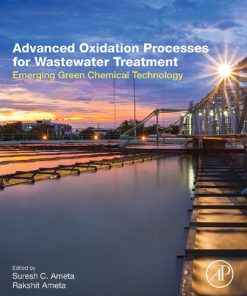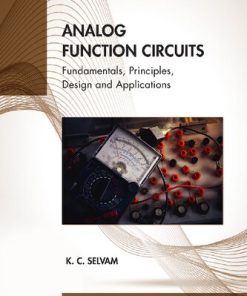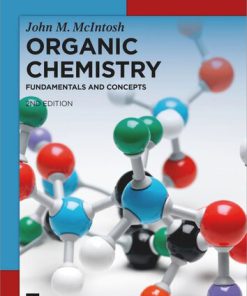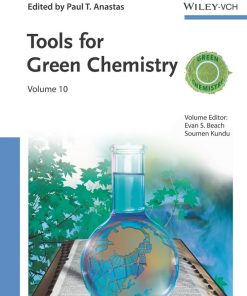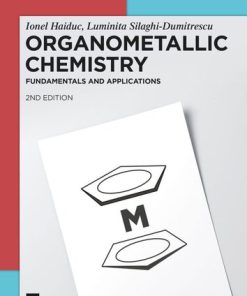Green Chemistry 2nd Edition Fundamentals and Applications by Suresh C. Ameta, Rakshit Ameta 9781000932652 1000932656
$50.00 Original price was: $50.00.$25.00Current price is: $25.00.
Green Chemistry 2nd Edition Fundamentals and Applications Suresh C. Ameta & Rakshit Ameta – Ebook Instant Download/Delivery ISBN(s): 9781003431473,100343147X,9781000932652, 1000932656
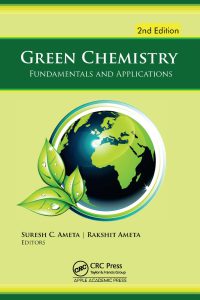
Product details:
- ISBN 10:1000932656
- ISBN 13: 9781000932652
- Author: Suresh C. Ameta, Rakshit Ameta
Green Chemistry, 2nd edition
Fundamentals and Applications
Table contents:
Chapter 1 Introduction
References
Chapter 2 Benign Starting Materials
2.1 Introduction
2.2 Sustainability
2.2.1 Renewable Feedstocks And Raw Materials
2.2.2 Oleochemistry
2.2.3 Photochemistry
2.2.4 Biocatalysis And Biotransformations
2.2.5 Capture Or Sequestration of Carbon Dioxide
2.2.6 Waste Biomass as Chemical Feedstock, Biomaterials and Biofuel
2.2.7 Biodegradation of Biomass to Biogas and Biodiesel
2.3 Sustainable Materials
2.4 Choice of Starting Materials
2.4.1 Chemical Substitutes and Replacements
2.4.2 Renewable Feedstock from Agriculture (Biomass)
2.5 Recent Developments
References
Chapter 3 Eco-Friendly Products and Reagents
3.1 Introduction
3.2 Bioplastics
3.3 Green Fuel (Hydrogen)
3.4 Green Pesticides
3.5 Green Drugs
3.6 Green Detergents/Surfactants
3.7 Green Dyes
3.8 Eco-Waxes
3.9 Green Building Construction Materials
i Geopolymer concrete
ii Novacem’s cement
iii Mineral admixtures or supplementary cementitious materials (SCMs)
3.10 Bio-Based Material Starbons
3.11 Biodiesel
3.12 Environmental Benign Supercritical Fluids
3.13 Nanoparticles
3.14 Antifoulants
3.15 Reduction Of Carbon Dioxide
3.16 Other Green Chemicals
3.17 Recent Developments
References
Chapter 4 Green Catalysts
4.1 Introduction
4.2 Biocatalysts
4.3 Organocatalysts
4.4 Metallocatalysts
4.5 Recent Developments
References
Chapter 5 Ionic Liquids: Promising Solvents
5.1 Introduction
5.2 Ionic Liquid As Green Solvent
5.2.1 Designer Solvents For A Cleaner World
5.2.2 Notations
5.2.3 Anions
5.2.4 Cations
5.2.5 Characteristics
5.2.6 Ionic Liquid Generation
5.3 Synthesis of Ionic Liquids
5.3.1 Use Of Microwave Irradiation
5.4 Use of Ionic Liquids in Organic Reactions
5.4.1 Oxidation
5.4.2 Oxidative Carbonylation Of Aniline
5.4.3 Reduction
5.4.4 Beckmann Rearrangement
5.4.5 Diels–Alder Reaction
5.4.6 Mannich Reaction
5.4.7 Heck Reaction
5.4.8 Friedel–Crafts Reaction
5.4.9 Wittig Reaction
5.4.10 Michael Addition Reaction
5.4.11 Fischer Indole Synthesis
5.4.12 Condensation Reaction
5.4.13 Coupling Reaction
5.4.14 Esterification Reaction
5.4.15 Cyclization
5.4.16 Biochemical Reaction
5.4.17 Biodegradation
5.4.18 Biginelli Reaction
5.4.19 Miscellaneous
5.5 Recent Developments
References
Chapter 6 Supercritical Solvents
6.1 Introduction
6.2 Some Major Supercritical Fluids
6.2.1 Supercritical Water
6.2.2 Organic Reactions In Supercritical Water (Scw)
6.2.3 Organic Reaction In Near Critical Water (Ncw) Region
6.3 Carbon Dioxide
i Diels–Alder reaction
ii Freidel–Crafts reaction
iii Supercritical polymerization
iv Oxidation reactions
v Hydrogenation reactions
vi Heck reaction
vii Coupling reaction
viii Photochemical reaction
ix Alkylation/acylation
x Esterification
xi Extraction
xii Catalysis
xiii Solubility
xiv Synthesis
xv Miscellaneous reactions
6.4 Recent Developments
References
Chapter 7 Other Green Solvents
7.1 Introduction
7.2 Some Major Green Solvents
7.2.1 Water
7.2.2 Polyethylene Glycol (Peg)
7.2.3 Glycerol
7.2.4 Cyclopentyl Methyl Ether (Cpme)
7.2.5 2-Methyltetrahydrofuran (2-Methf)
7.2.6 Ethyl Lactate
7.2.7 Perfluorinated (Fluorous) Solvents
7.2.8 p-Cymeme
7.2.9 Limonene
7.2.10 Gamma-Valerolactone
7.3 Recent Developments
References
Chapter 8 Photocatalysis: An Emerging Technology
8.1 Introduction
8.2 Photocatalysis
8.2.1 Photocatalytic Reactions
8.2.2 Photocatalysts
8.2.3 Band Gap
8.2.4 Mechanism Of Photocatalysis
8.2.5 Fate of Excited Electron–Hole Pair
8.3 Wastewater Treatment Processes
8.3.1 Dyes
8.3.2 Pesticides
8.3.3 Surfactants
8.3.4 Hydrocarbons
8.3.5 Alcohols
8.3.6 Phenols
8.3.7 Halo Compounds
8.3.8 Carbonyl Compounds
8.3.9 Nitrogen-Containing Compounds
8.3.10 Hydrogen Production
8.3.11 Reduction of Carbon Dioxide
8.3.12 Others
8.4 Recent Developments
References
Chapter 9 Photo-Fenton Reactions: A Green Chemical Route
9.1 Introduction
9.2 THe Fenton’s Reagent
9.3 Photo-Fenton Reaction
9.4 Photodegradation of Some Organic Compounds
9.4.1 Hydrocarbons
9.4.2 Carboxylic Acids
9.4.3 Phenols and its Derivatives
9.4.4 Halo Compounds
9.4.5 Nitro Compounds
9.4.6 Pesticides
9.4.7 Dyes
9.4.8 Drugs
9.4.9 Others
9.5 Recent Developments
References
Chapter 10 Sonochemistry: A Pollution-Free Pathway
10.1 Introduction
10.2 Ultrasound
10.2.1 Classification
10.2.2 Principles of Sonochemistry
10.2.3 Phenomenon of Cavitation
10.2.4 Factors Affecting Cavitation
10.2.5 Sources of Ultrasound In Sonochemistry
10.3 Organic Synthesis
10.4 Biological Reactions
10.5 Polymer Synthesis
10.5.1 Radical Polymerization
10.5.2 Polymer Scission
10.6 Heterogeneous Catalysis
10.6.1 Liquid–Liquid Systems
10.6.2 Liquid-Solid Systems
10.7 Organometallic Processes
10.8 Scale-Up Consideration
10.9 Other Applications
10.9.1 Hydrogen Production
10.9.2 Extraction
10.9.3 Nanoparticles
10.9.4 Water Treatment
10.9.5 Organic Synthesis
10.9.6 Solar Cells
10.10 Recent Developments
References
Chapter 11 Microwave-Assisted Organic Synthesis: A Need of the Day
11.1 Introduction
11.2 Microwave-Assisted Chemistry
11.2.1 Microwaves As Energy Source
11.2.2 Microwaves As A Tool For Synthetic Chemistry
11.3 Principle
11.3.1 Dipolar Polarization
11.3.2 Conduction Mechanism
11.3.3 Microwave Chemistry Apparatus
11.3.4 Reaction Vessels and Reaction Medium
11.3.5 Microwave Effect
11.3.6 Comparison Between Microwave Heating and Conventional Heating
11.3.7 Limitations of Microwave Chemistry
11.4 Classification of Microwave Reactions
11.4.1 Solvent-Assisted Synthesis
11.4.2 Solvent-Free Synthesis
11.5 Applications In Organic Synthesis
11.5.1 Oxidation Reactions
11.5.2 Reduction Reactions
11.5.3 Alkylations
11.5.4 Rearrangements
11.5.5 Cycloadditions
11.5.6 Condensation
11.5.7 Esterifications
11.5.8 Protection Reactions
11.5.9 Transition Metal-Catalyzed Coupling Reactions
11.5.10 Synthesis of Heterocycles
11.5.11 Synthesis of Nanocomposites
11.5.12 Synthesis Of Ionic Liquids
11.5.13 Multicomponent Reactions
11.5.14 Metal Organic Framework (MOF)
11.5.15 Coupling Reactions
11.6 Miscellaneous
11.7 Recent Development
References
Chapter 12 Green Composites
12.1 Introduction
12.2 Designing for Composites
12.3 Life Cycle Assessment
12.4 Natural Fiber Sources
12.5 Natural Polymer Sources
i Polylactic acid (PLA)
ii Polyhydroxy alkanoates (PHA)
iii Starch
12.6 Green Composites
12.6.1 Natural Fiber Biocomposites
i Cellulose Fiber-Based Biocomposites
ii Jute-Based Biocomposites
iii Flax and Hemp-Based Biocomposites
12.6.2 Natural Polymer Biocomposites
12.7 Properties Of Biocomposites
i Properties of fiber
ii Properties of resin
iii Geometry and orientation of the fibers in the composite
iv Surface interaction of fiber and resin
12.8 Applications Of Green Composites
i Automobiles
ii Aircrafts, ships, and trains
iii Packaging
iv Construction and building products
v Mobile phones and computers
vi Miscellaneous applications
12.9 Reuse, Recycling, and Degradation of Composites
12.10 Biodegradation of Composites
12.11 Recent Developments
References
Chapter 13 Green Manufacturing Processes
13.1 Production Process Changes
13.2 Changes of Inputs in the Production Process
13.3 Internal Reuse of Waste
13.4 Better Housekeeping
13.5 Pharmaceutical Industry
13.6 Polymer Industries
13.6.1 Bioplastics
13.7 Other Industries
13.8 Recent Developments
People also search:
green chemistry 2nd edition fundamentals
green chemistry worksheet
green chemistry guidelines
green chemistry & engineering conference
green chemistry education
You may also like…
Uncategorized
Science (General)
Atomic Molecular Symmetry Groups and Chemistry 1st Edition S.C. Rakshit
Engineering - Electrical & Electronic Engineering
Analog Function Circuits: Fundamentals, Principles, Design and Applications K. C. Selvam
Others
Handbook of Green Chemistry Tools for Green Chemistry 1st Edition by Beach 9783527688494 3527688498
Uncategorized

